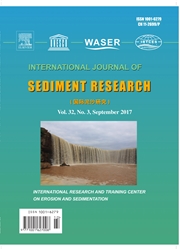

 中文摘要:
中文摘要:
Two-dimensional hydrodynamic simulation for the Yangtze Estuary is performed by using the Delft3D model adopting the shallow water equations and the finite volume method on a curvilinear body-fitted grid. The model is calibrated and validated using available tidal data and field measurements. The velocity vector fields, the tidal levels, the trajectories of drogues and the far field sewage dilution from the existing and proposed outfalls are studied for the spring/neap tide and the dry/wet season. The results show that the tidal currents and the runoff flow are able to dilute and disperse the sewage from the outfalls to the outer sea. The sewage dilution contours under various hydrodynamic conditions indicate that the discharged effluent at present have relatively minor impact on the water environment of the Yangtze Estuary; whereas the planned sewage plan would significantly deteriorate the water quality of the estuary in the absence of any treatment, especially during the neap tide of dry season. The drogue tracking shows that the effluent from the four ouffalls will be transported downstream to the Hangzhou Bay. A study on the pollution due to the project and the self-purification capacity of Hangzhou Bay is proposed in addition to that of the Yangtze Estuary.
 同期刊论文项目
同期刊论文项目
 同项目期刊论文
同项目期刊论文
 期刊信息
期刊信息
